from 0 review
21 Days / 20 Nights
English, Urdu
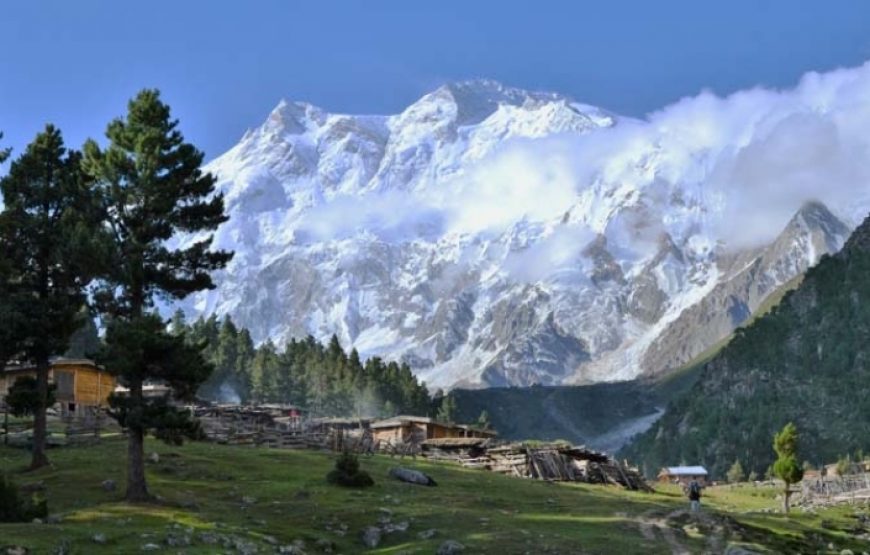
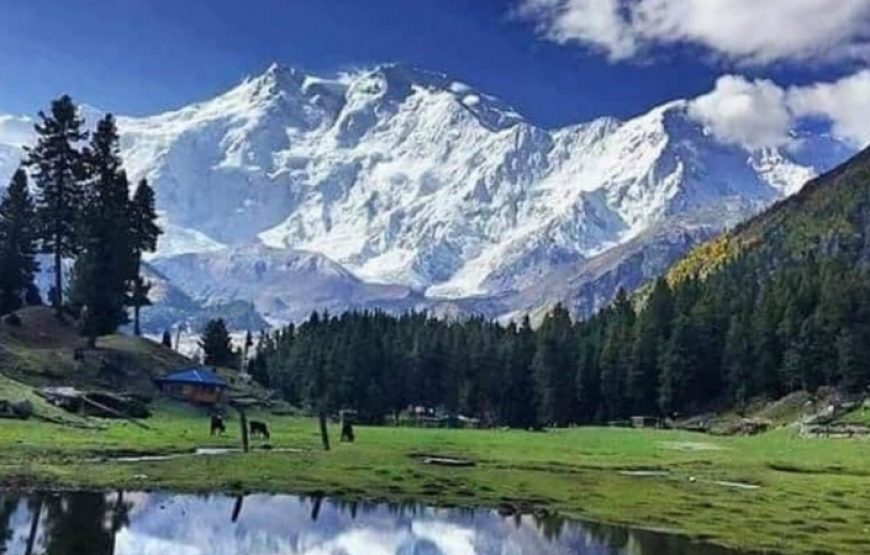
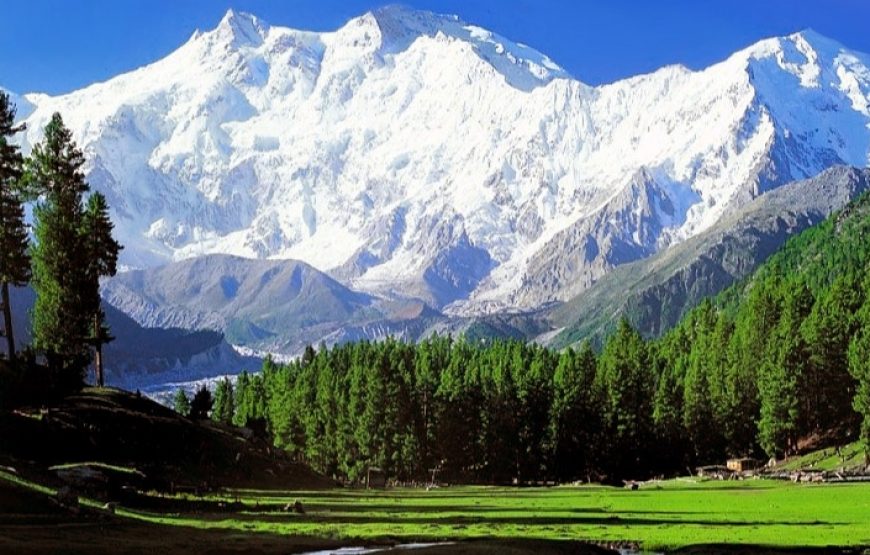
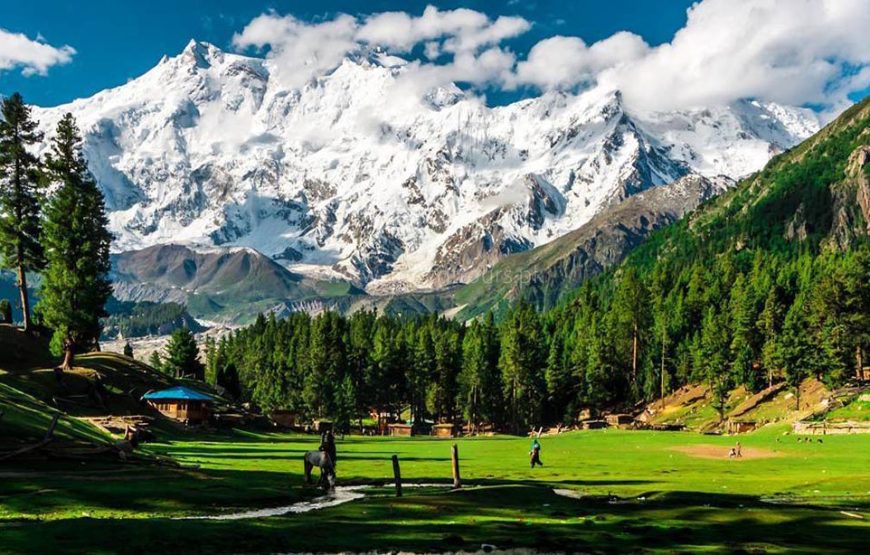
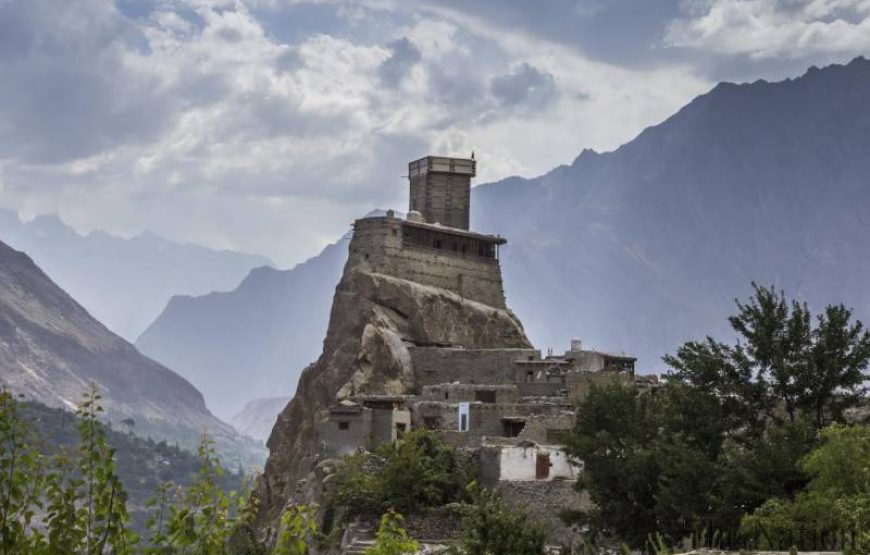

Nanga Parbat, standing at 8,125 meters (26,813 feet), is the second-highest mountain in Pakistan’s western Himalayas and ranks ninth in the world. It is renowned as one of the most challenging mountains to climb, earning nicknames like “Naked Mountain” due to its imposing and rugged appearance and “Killer Mountain” because of the numerous tragic incidents that occurred during early expeditions, resulting in one of the highest casualty rates among all mountains.
This colossal massif comprises a 20-kilometer-long series of peaks and ridges culminating at 8,125 meters, the primary peak named Nanga Parbat. The region also boasts several other peaks, including South Jalipur Peak, North Jalipur Peak, Buldar Peak, and Rupal Peak, among others. These lesser-known peaks offer opportunities for trekking and exploration in the vicinity.
Nanga Parbat is located in the Diamar District of Gilgit-Baltistan, Pakistan, just south of the Indus River. The mountain presents three distinct climbing routes, each with prominent base camps: the Rupal Face (Eastern Face), the Raikot-Fairy Meadow Face (Northwestern Face), and the Diamir Face (Western Face). These faces differ significantly in terms of appearance and geography, and their routes originate from different valleys. The Rupal Face provides trekkers with breathtaking close-up views of the mountain.
A comprehensive Around Nanga Parbat trek program involves visiting all three faces and crossing high passes along the way. Trekkers can experience the cultural diversity and natural beauty of the surrounding areas while making a complete circuit around the mountain. The trek reaches its highest point at Mazeno, a semi-technical pass, where fixed ropes are often necessary for navigating steep crevassed slopes. The journey concludes at Fairy Meadows, aptly named for its stunning natural beauty and surroundings.
Nanga Parbat, also known as Killer Mountain, has a grim history of fatalities, making this trek a poignant exploration of the mountain’s contrasting facets. It takes you from the lush, green alpine meadows of Rupal Valley to the stark and challenging landscape of Diamer Valley. The approach to the mountain passes through delightful Alpine terrain, characterized by pine forests, meadows adorned with colorful flowers, and provides a breathtaking view of Nanga Parbat from the Indus River, a sight that is truly awe-inspiring.
Upon arrival at Islamabad International Airport, you will be welcomed by our representative and transferred to your hotel. Depending on your arrival time, there may be an optional city tour including Faisal Mosque, Pakistan Monument, and the bustling streets of Saddar. Overnight stay in Islamabad.
We begin the journey north via the scenic Babusar Pass (if open) or along the legendary Karakoram Highway (KKH). Both routes offer dramatic views of the Indus River, high peaks, and deep valleys. Arrive in Chilas and check in to the hotel for overnight stay.
A thrilling drive along the Astore River leads us into the lush green Astore Valley and onward to the remote village of Tarishing. This beautiful hamlet, nestled at the foot of the Rupal Face of Nanga Parbat, serves as the starting point for the trek. Overnight in a guesthouse or tents.
The trek begins with a gentle ascent through forested trails and alpine meadows, crossing streams and glacier-fed rivers. Reach Herrligkoffer Base Camp, named after the German expedition leader who led several Nanga Parbat climbs. Camp overnight.
The trek begins with a gentle ascent through forested trails and alpine meadows, crossing streams and glacier-fed rivers. Reach Herrligkoffer Base Camp, named after the German expedition leader who led several Nanga Parbat climbs. Camp overnight.
We follow the Rupal River further up-valley through pastures and moraines toward Shaigiri. The mountain views remain imposing throughout. Camp is set in a scenic location below the towering ridge lines.
Today’s trek brings us to the foot of the Mazeno Pass, one of the most dramatic and remote sections of the route. Expect glacier crossings, rugged terrain, and incredible solitude. Overnight at base camp.
A short but demanding day as we ascend to the high camp in preparation for the pass crossing. Fixed ropes may be used depending on snow and ice conditions. Overnight in a cold but breathtakingly beautiful high camp.
We begin before dawn to cross the Mazeno Pass, the highest point of the trek. The crossing is semi-technical, with steep ascents and descents over snowfields. Once over the pass, descend into Loiba Meadows, a serene and lush camp site surrounded by alpine splendor.
Continue the descent along narrow trails, river crossings, and rocky terrain toward the village regions near the Diamir Face. Overnight in Upper Jale, a remote and isolated hamlet tucked into the valley.
This leg takes you deeper into the Diamir Valley. The scenery transforms as the terrain grows more arid and raw. Trek through villages and local settlements to reach Kutagali. Overnight in camp.
Our route continues through traditional valleys rich with natural beauty and glimpses of local life. The trail winds along rivers and forested stretches to Shiache. Overnight camping.
Approaching the Raikot Face, this day’s walk offers changing landscapes—from sparse terrain to lush sections. Gutum Sagar lies near the approach to the northern face. Camp here with striking views of surrounding ridges.
We climb gradually toward Jiliper High Camp, located near the base of the Raikot Face. This area is surrounded by glacial terrain and rock walls. Expect dramatic sunset views on Nanga Parbat’s northwest side.
Descend toward the famous Fairy Meadows through pine forests and past shepherd huts. This lush alpine meadow offers postcard-perfect views of Nanga Parbat and is one of the most iconic locations in Pakistan. Overnight in wooden cabins or tents.
A full-day hike leads you to the base of Nanga Parbat’s north face. The trail passes through the moraines of Raikot Glacier and provides awe-inspiring panoramas of the “Killer Mountain.” Return to Fairy Meadows by evening.
A morning walk takes us to the village of Tato where jeeps await to drive us down to Raikot Bridge. From there, continue along the Karakoram Highway to the Hunza Valley. Arrive in Karimabad by evening. Overnight in a hotel with views of Rakaposhi and Ultar peaks.
Visit Baltit Fort, Altit Fort, Attabad Lake, and the Passu Glacier viewpoint. Learn about Hunza’s rich history and culture while enjoying breathtaking mountain scenery. Optional local music and food experience. Overnight in Hunza.
Begin the return journey south along the KKH, driving to the town of Besham. Overnight stay in a comfortable hotel en route to Islamabad.
Complete the final leg of the road journey to Islamabad. Afternoon at leisure for shopping or sightseeing. Farewell dinner in the evening. Overnight stay in hotel.
After breakfast, transfer to the airport for your international flight. End of services.
Thoughtful thoughts to your inbox